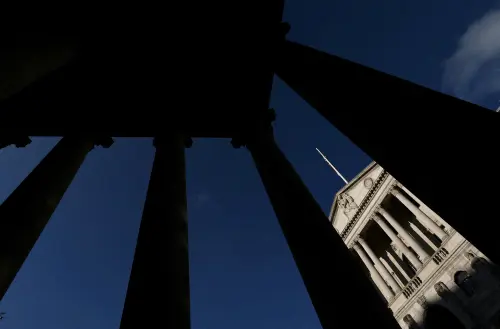The Bank of England maintained its interest rates and cautioned investors against expecting swift rate cuts as it navigated significant uncertainty in both the British and global economies.
The Monetary Policy Committee voted 8-1 to keep borrowing costs at 4.5%, with only external member Swati Dhingra advocating for a quarter-point reduction. Economists had largely anticipated a 7-2 vote for the decision to hold rates.
Governor Andrew Bailey emphasized the sudden lack of clarity about the economic outlook, largely stemming from escalating trade tensions initiated by the United States under President Donald Trump. Additionally, the UK economy faces higher inflation risks as a tax increase for employers is set to take effect next month.
Bailey acknowledged the need for caution regarding future rate cuts due to ongoing inflation pressures. He remarked on the importance of gathering evidence indicating a reduction in price pressures before making adjustments.
With UK inflation remaining firmly above the 2% target, hitting 3% in January, the Bank of England has implemented fewer rate cuts than the European Central Bank and the U.S. Federal Reserve since last summer, contributing to sluggish economic growth.
The next scheduled rate announcement is on May 8, by which time the Bank will assess whether the U.S. has enacted tariffs on additional imports.
Following the announcement, investors perceived less than a 50% likelihood of a rate cut in May, expecting only 44 basis points of cuts—less than two quarter-point reductions—this year, a decrease from earlier expectations of over 50 basis points.
The MPC clarified that there was no presumption of a predetermined monetary policy trajectory in the upcoming meetings, although it anticipated that inflation pressures would continue to ease.
The pound rose slightly against the U.S. dollar immediately after the announcement but later receded some gains. British two-year government bond yields, sensitive to interest rate speculation, increased by nearly six basis points by the end of the trading day.
Analysts noted the central bank's cautious stance. Paul Dales, chief UK economist at Capital Economics, suggested there could be a pause in the Bank's trend of cutting rates every three months since last August, with May now a conceivable option instead of August. He predicted that the weak economy would prevent prolonged high inflation, allowing the Bank to resume rate cuts in November, ultimately lowering them to 3.50% next year.
Allan Monks, an economist at JP Morgan, still anticipated a rate cut in May amidst economic weakening, but this outlook could shift based on trade war developments and the effects of the tax increase on inflation and growth.
In its statement, the Bank reiterated its commitment to a gradual and careful approach to rate adjustments.
The U.S. Federal Reserve recently cut its economic growth forecasts for the current year while raising its inflation projection, maintaining steady borrowing costs. The European Central Bank President indicated that a 25% U.S. tariff on European imports could reduce eurozone growth by approximately 0.3 percentage points in the first year, increasing to about half a percentage point if retaliatory measures are taken.
The Bank noted an increase in other geopolitical uncertainties and acknowledged substantial borrowing initiatives that could stimulate growth in Europe. Domestically, the forthcoming tax hike for employers was likely contributing to price increases in the services sector, alongside surveys indicating subdued hiring intentions among businesses.
The MPC is also monitoring Finance Minister Rachel Reeves' upcoming budget update speech, in which cuts to public spending are expected to be announced.
The Bank projected British inflation peaking at 3.75% in the third quarter of this year, slightly above its February estimate of 3.7%. Additionally, it revised its forecast for economic growth in the first three months of 2025 to 0.25%, up from 0.1%.
